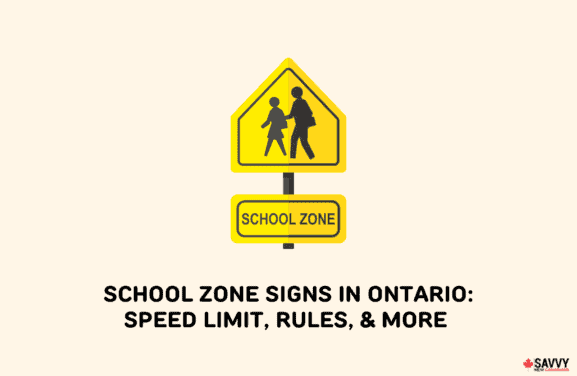Understanding the rules for car seats in Canada is very important. If you travel with children, it’s crucial that you know the car seat regulations and comply with them. These guidelines aim to protect children by restraining and positioning them safely in the car.
This article will detail the car seat laws in Canada by province, the rear-facing car seat laws, when to install a forward-facing car seat, the booster seat requirements by province, and how to choose a car seat for your child.
Rear-Facing Car Seat Rules in Canada By Province
| Province | Rear-Facing Car Seat Rules |
| Alberta | Use a rear-facing car seat until your child is at least 2 years old or until they reach the maximum weight or height limits specified by the car seat manufacturer. |
| British Columbia | Ensure your child is secured in a rear-facing car seat until at least 1 year old and weighs 9 kg (20 lb). Use until the child reaches 18 kg (40 lb). |
| Manitoba | Use a rear-facing car seat that fits your child’s age, weight and height from birth until they reach the car seat’s maximum weight and height limits set by the manufacturer. |
| New Brunswick | Use a car seat that suits your child’s age, weight and height. |
| Newfoundland and Labrador | Secure your child in a rear-facing car seat until at least 9 kg (20 lb). Continue using it until the child reaches a minimum of 18 kg (40 lb). |
| Nova Scotia | Use the seat until your child is at least 1 year old and weighs 10 kg (22 lb). |
| Ontario | Keep your child in a rear-facing car seat until they reach a minimum of 9 kg (20 lb). Use it until the child is a minimum of 18 kg (40 lb). It must likewise meet the manufacturer’s suggested use. |
| Prince Edward Island | Secure your child in a rear-facing car seat until your child is at least 1 year old and weighs 10 kg (22 lb). |
| Quebec | Use a rear-facing seat until your child is at least two years of age. |
| Saskatchewan | Use a car seat suitable for your child’s age, weight and height until they are a minimum of 18 kg (40 lb). |
When to Switch to a Forward-Facing Car Seat in Canada
Even if your child is allowed to move to a forward-facing seat, experts recommend that they remain in the rear-facing position. As much as possible, keep using rear-facing seats. The reason is that this position is the safest for your child.
But once your child is at least 2 years old and has outgrown the rear-facing car seat, you can upgrade to a forward-facing seat. Ensure it has a 5-point harness and keep it that way until the child weighs at least 18 kg (40 lb).
A 5-point harness has 5 straps that secure a child in their car seat. Two straps go over the shoulders, two at the hips, and a central buckle connecting all the straps at the front.
Use a forward-facing car seat until the child reaches the maximum weight or height limits required by the manufacturer.
Booster Seat Requirements in Canada By Province
| Province | Booster Seat Laws |
| Alberta | Use a booster seat until your child reaches the maximum weight or height limits specified by the car seat manufacturer. |
| British Columbia | Keep your child in a booster seat until they are at least 145 cm (4’9″) tall or until they reach 9 years old. |
| Manitoba | Secure your child in a booster seat until your child reaches 145 cm (4’9″) tall, or 36 kg (80 lb), or 9 years of age. |
| New Brunswick | Use a booster seat until the child reaches 145 cm (4’9″) tall, or 36 kg (80 lb), or 9 years old. |
| Newfoundland and Labrador | Keep using a booster seat until the child is 9 years old, 145 cm (4’9″) tall, and weighs 37 kg (81 lb). |
| Nova Scotia | Use a booster seat until the child is 145 cm (4’9″) tall, or 9 years old. |
| Ontario | Use a booster seat until the child is 145 cm (4’9″), 10 years old, or exceeds the manufacturer’s weight limit. |
| Prince Edward Island | A booster seat must be used until the child is 10 years old, or 145 cm (4’9”) tall, or exceeds the weight limit that the manufacturer set. |
| Quebec | Use a booster seat until the child is 145 cm (4’9″) or 9 years old. |
| Saskatchewan | Keep using a booster seat until the child is 7, or until 36 kg (80 lb) and 145 cm (4’9″) tall. |
| Yukon | Use a child restraint system or booster seat until your child is 145 cm (4’9″) or weighs 45 kg (100 lb). |
Do Car Seats Expire in Canada?
All car seats in Canada have expiration dates. Depending on the car seat manufacturer, these expiration dates usually range from 6 to 10 years. You can locate the expiration date on the bottom of the car seat or stamped on the plastic frame of the seat.
How Long Are Car Seats Good for in Canada?
In all provinces, car state regulations state that car seats are good to use before they expire. This will vary by manufacturer. It’s vital to check the exact expiry date of the car seat before using it.
For safety purposes, don’t use a car seat past its expiry date. Wear and tear can weaken the seat’s material and minimize its efficiency.
Likewise, if your child has exceeded the maximum weight and height for the car seat, make sure to replace the seat with the appropriate one, whether it’s a forward-facing car seat or a booster seat.
How to Choose a Car Seat for Your Child
Here are tips on choosing the car seat that suits your child the most:
- The car seat should match your child’s age, weight, and height. It should also fit your car.
- Check for the National Safety Mark, an indication that the car seat meets Canada’s safety standards.
- Buy a car seat only from a Canadian retailer in your area so that you can check the fit in your vehicle before you pay for the car seat.
- Avoid buying a second-hand car seat. It may have damage, and there may be missing parts. All these can endanger the safety of your child.
- The manufacturer’s instructions must be available. Read it thoroughly to ensure your child’s safety, proper installation and use, and to be aware of its maintenance and care.
Once you have chosen a car seat for your child, register it with the manufacturer. The manufacturer can easily contact you in the event of a product recall.
FAQs
Does a 7-year-old need a car seat in Canada?
A child must ride in a booster seat until they reach at least 9 years old or a minimum of 4’9″. Children can remain on a rear-face seat, provided it’s permitted by the weight limits of the seat.
Do toddlers need to be in a car seat in a taxi in Canada?
The Ministry of Transportation exempts taxis from the car seat requirement. So, toddlers can travel in Canada in a taxi without a child’s car seat. But to be sure, you must ensure your child is secured in an appropriate car seat.
Does a 3-year-old need a car seat on a plane in Canada?
For safety reasons, car seats are required for infants under 2 occupying a plane seat. It’s recommended that the child is secured in a safety seat or child restraint device during takeoff, landing, and turbulence.
How long does a child need a car seat in Canada?
A child would need a car seat until they turn 9 years old, weigh 36 kg (80 lb), or reach 145 cm (4’9″) in height. After any of these milestones are achieved, the child can move to wearing a seatbelt alone.
Related:



